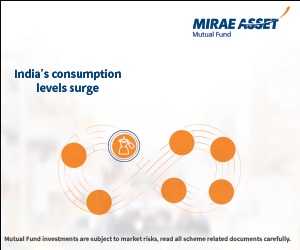Why Systematic Investment Plans Fail Sometime?

Systematic Investment Plans in our Mutual Fund Industry have become a product by itself. The industry has recorded the highest Gross SIP Inflows of INR 14,276 in March 2023, with overall inflows at INR 1,55,972 in FY 2022-23 and SIP Assets Under Management at INR 6,83,296 as on March 2023. The total SIP accounts now are at 6.36 Crore in FY 2022-23 from 5.27 Crore in FY 2021-22
The industry witnessed a Net SIP inflow from over INR 47,000 Crore in FY 2021-22 to almost INR 84,000 Crore in FY 2022-23, hence a “Net Inflow” of almost 55% in SIPs in FY 2022-23. Further, an outstanding growth of 78% in Net Inflows in SIPs, when compared between FY 2021-22 to FY 2022-23. Almost 90% of SIP inflows are accounted between Equity, Solution Oriented & Hybrid Category, with Equity Funds taking the lead at 84% as a category.

Certainly, this great effort is attributed to the wonderful on ground efforts being done by our Mutual Fund Distributors. The industry has added 23,300 new ARNs Registered in FY 2022-23, now the total number of Individual ARNs is over 1.22 Lac, we certainly need more Individuals joining the industry to focus on this untapped potential.
The below data shows the SIP trend for FY 2022-23 across parameters. The data has been scaled to 1000 for uniformity in presentation.

Actual data for SIP for FY 2022-23

NOW, it will be correct to say, that like Xerox, Colgate etc, where in the Brand has taken a Lead over the Industry Category as such! SIP is also a Brand Today.
Now, some quick thoughts on SIP Failures & how can we control this?
- Lack of research before selection of Scheme. Hence, take this step most seriously for your client “Risk Assessment” for the long term. We all are different, with varied back grounds and Cash Flows Gifted!! Hence opting the right scheme is very critical, as it’s for the Long Term.
- SIP value must increase in the “Same” scheme as the Corpus of the Investment increases, as we are not averaging enough otherwise! Simple Averaging Theory!
An example:
![SIP Failures & how can we control SIP Failures & how can we control]()
Not assumed any rate of return, as not permitted. All values in INR
So, the monthly SIP Averaging of “Just the Corpus” created, dropped from 1.67% in 5 Years period to 0.42% in 20 Years period - Over Diversification of SIP schemes. Buying everything dilutes the returns, hence staying with the core asset allocation through SIPs always helps, post a proper scheme selection process.
- Most Important, SIP are always the First Investment Product to be “Stopped/Ceased” when in a Financial Crisis. SIPs have to continue! Hence always create a Crisis Fund through Debt & Money Market Fund allocation regularly for the client, such that in any crisis, funds can be redeemed for such utilization. SIPs must continue.
- “Only in the case of a Goal Based SIP being done”, post achievement of targeted returns/Goals, switch funds to a lower market volatility Fund, in order to freeze the returns achieved, as market do not move in a linear manner. Though being out of the market is a huge opportunity loss! So, start another SIP immediately for your client.
- A big problem, “Rear View Image Investing”. Past Performance is of the Past. Do good research always as you are investing for the “Future”. Avoid Rear View Image Investing!
- Poor Performance in the Short Term! and SIPs are stopped! The client is investing for the long term & we are looking at the performance for the short term. It’s great to keep a track of investments, but do not react & STOP the SIPs, must Continue with your plan so decided of SIPs in the same scheme. As remember, the SIP return generation starts always with a delayed pattern due to multiple market cycles.
- Do not follow schemes with lower Total Expense Ratio, a poor investment management process will not be covered with lower charges! In long term, only great investment management process will create a superior portfolio gain, irrespective of expenses.
- Thematic Funds, do well momentarily, as thematic funds have their own good cycles too! But while creating a long-term SIP Plan, diversified Mid Cap & Small Cap funds seems to be the best option, you will be pleasantly surprised on the long-term wealth creation for your client.
- Fund Manager has Quit! No organisation is a single person dependent. Organisations have set their Processes & Protocol (P&P) for such a situation. Hence, believe in the organisation, its management & processes AND do not jump the SIP. There are multiple such examples of schemes doing well even post the Fund Manager leaving the organisation. Continuity of SIP is the key here!
There is no better way to Invest in Equities than SIP, we just need to tweak a bit.
Mutual Fund Investments are subject to market risk, read all scheme related documents carefully.
Queries
-
What is the benefit of mutual fund STP
Aug 29, 2019
-
How much to invest to meet target amount of Rs 2 Crores
Aug 26, 2019
-
Can I achieve my financial goals with my current mutual fund investments
Aug 24, 2019
-
Can you tell me return of various indices
Aug 19, 2019
-
What would be the post tax return on different investments
Aug 18, 2019
-
Which Principal Mutual Fund scheme will be suitable for my retirement corpus
Aug 16, 2019
-
What is the minimum holding period for availing NCD interest
Aug 4, 2019
Top Performing Mutual Funds
Recommended Reading
Fund News
-
Edelweiss Mutual Fund launches Edelweiss BSE Internet Economy Index Fund
Apr 25, 2025 by Advisorkhoj Team
-
Bajaj Finserv Mutual Fund launches Bajaj Finserv Nifty 50 Index Fund
Apr 25, 2025 by Advisorkhoj Team
-
SBI Mutual Fund launches SBI Income Plus Arbitrage Active FOF
Apr 23, 2025 by Advisorkhoj Team
-
Motilal Oswal Mutual Fund launches Motilal Oswal Infrastructure Fund
Apr 23, 2025 by Advisorkhoj Team
-
Groww Mutual Fund launches Groww Gilt Fund
Apr 23, 2025 by Advisorkhoj Team














